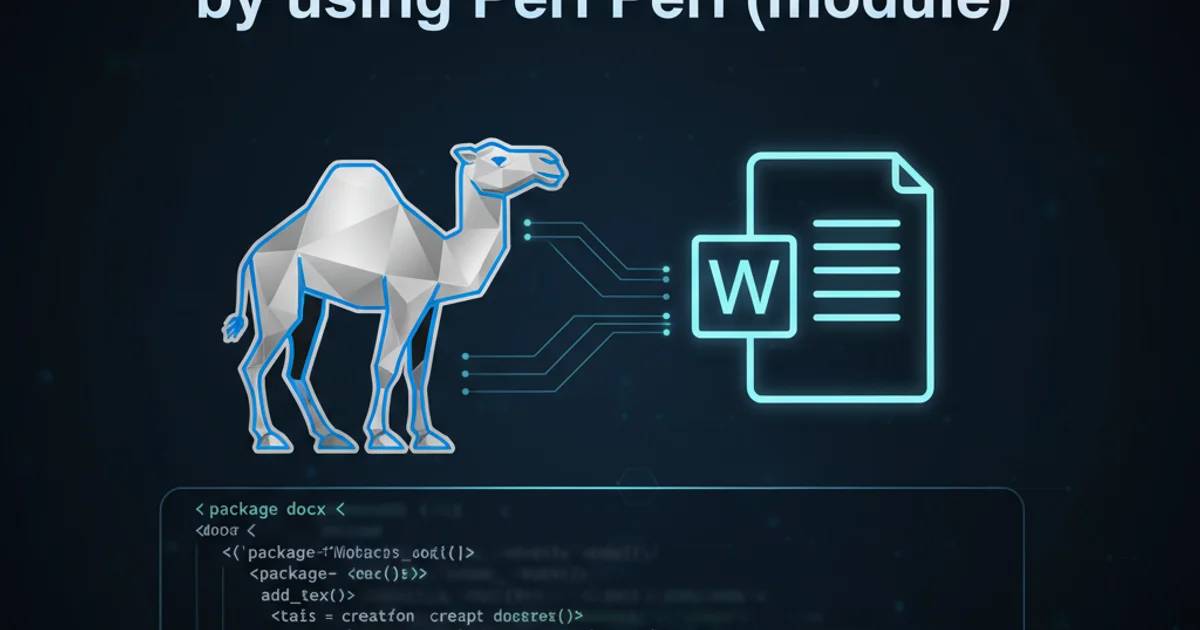Javascript json_encode > JSON.parse() array
Categories:
Handling PHP json_encode Arrays in JavaScript with JSON.parse()

Learn how to correctly pass array data from PHP to JavaScript using json_encode and parse it with JSON.parse() to avoid common pitfalls.
When building dynamic web applications, it's common to need to transfer structured data from a server-side language like PHP to client-side JavaScript. A robust and widely accepted method for this is using JSON (JavaScript Object Notation). PHP's json_encode() function is perfect for converting PHP arrays into JSON strings, which JavaScript can then easily parse using JSON.parse().
The PHP Side: Encoding Arrays to JSON
PHP's json_encode() function takes a PHP value (like an array or object) and returns its JSON representation as a string. This string is then typically embedded directly into the HTML output or returned as an API response. It's crucial to ensure that the data you're encoding is valid and that json_encode() doesn't encounter any issues, which could result in an empty string or false.
<?php
$data = [
'fruits' => ['apple', 'banana', 'orange'],
'vegetables' => ['carrot', 'broccoli', 'spinach'],
'numbers' => [1, 2, 3, 4, 5]
];
$json_data = json_encode($data);
// Outputting directly into a JavaScript variable
echo '<script>';
echo 'const phpData = ' . $json_data . ';';
echo '</script>';
// Or for an API endpoint
header('Content-Type: application/json');
echo $json_data;
?>
PHP code encoding an associative array into a JSON string and embedding it in HTML.
json_encode(). If it returns false, there was an error during encoding. You can use json_last_error() and json_last_error_msg() to debug.The JavaScript Side: Parsing JSON Strings
Once the JSON string is available in JavaScript (either embedded in a <script> tag or fetched via AJAX), you use JSON.parse() to convert it back into a native JavaScript object or array. This function is fundamental for working with JSON data in JavaScript. It's important to remember that JSON.parse() expects a valid JSON string. Any malformed JSON will cause a SyntaxError.
// Assuming phpData is available from the PHP script above
// const phpData = {"fruits":["apple","banana","orange"],"vegetables":["carrot","broccoli","spinach"],"numbers":[1,2,3,4,5]};
// If the data is already a JavaScript object (e.g., directly echoed by PHP as a JS literal),
// you don't need JSON.parse().
console.log('Directly available JS object:', phpData);
console.log('Fruits:', phpData.fruits);
// If the data comes as a string (e.g., from an AJAX call or a data attribute)
const jsonString = '{"items":["item1","item2"],"count":2}';
try {
const jsObject = JSON.parse(jsonString);
console.log('Parsed JS object from string:', jsObject);
console.log('Items:', jsObject.items);
} catch (e) {
console.error('Error parsing JSON:', e);
}
JavaScript code demonstrating how to access an object directly and parse a JSON string.
flowchart TD
A[PHP Array] --> B{json_encode()}
B --> C["JSON String (e.g., '{\"key\":[1,2]}')"]
C --> D[HTML Output / API Response]
D --> E[JavaScript Environment]
E --> F{JSON.parse()}
F --> G[JavaScript Object/Array]
G --> H[Use Data in JS]Data flow from PHP array to JavaScript object using JSON.
Common Pitfalls and Best Practices
While json_encode() and JSON.parse() are straightforward, several issues can arise. Understanding these can save significant debugging time.
json_encode() to ensure proper escaping and valid JSON format.PHP Encoding Options
'O\'Malley', 'html' => 'bold']; // JSON_HEX_QUOT: Escapes double quotes // JSON_HEX_APOS: Escapes single quotes // JSON_UNESCAPED_SLASHES: Does not escape '/' (useful for URLs) // JSON_UNESCAPED_UNICODE: Does not escape multi-byte Unicode characters // JSON_PRETTY_PRINT: Formats the output with whitespace for readability $encoded_data = json_encode($data, JSON_HEX_QUOT | JSON_HEX_APOS | JSON_UNESCAPED_UNICODE | JSON_PRETTY_PRINT); echo $encoded_data; /* Output: { "name": "O\u0027Malley", "html": "bold" }*/ ?>JavaScript Error Handling
const malformedJson = '{ "key": "value", }'; // Trailing comma is invalid JSON const validJson = '{ "key": "value" }';
try { const parsed = JSON.parse(malformedJson); console.log(parsed); } catch (e) { console.error('Failed to parse malformed JSON:', e.message); // Expected output: "Failed to parse malformed JSON: Unexpected token } in JSON at position 19" }
try { const parsed = JSON.parse(validJson); console.log('Successfully parsed valid JSON:', parsed); } catch (e) { console.error('This should not happen:', e.message); }
1. Step 1: Prepare your PHP Array
Ensure your PHP array contains the data you wish to transfer. Associative arrays will become JavaScript objects, and indexed arrays will become JavaScript arrays.
2. Step 2: Encode with json_encode()
Use json_encode($yourArray) to convert the PHP array into a JSON string. Consider using options like JSON_HEX_QUOT if embedding directly into HTML attributes, or JSON_PRETTY_PRINT for debugging.
3. Step 3: Transfer to JavaScript
Embed the JSON string directly into a <script> tag as a JavaScript variable assignment, or send it as a response from an API endpoint (e.g., using fetch or XMLHttpRequest).
4. Step 4: Parse with JSON.parse()
In your JavaScript code, use JSON.parse(jsonString) to convert the JSON string back into a usable JavaScript object or array. Always wrap this call in a try...catch block to handle potential parsing errors.
5. Step 5: Utilize the Data
Access the data as you would any other JavaScript object or array, using dot notation or bracket notation (e.g., myObject.key or myArray[0]).